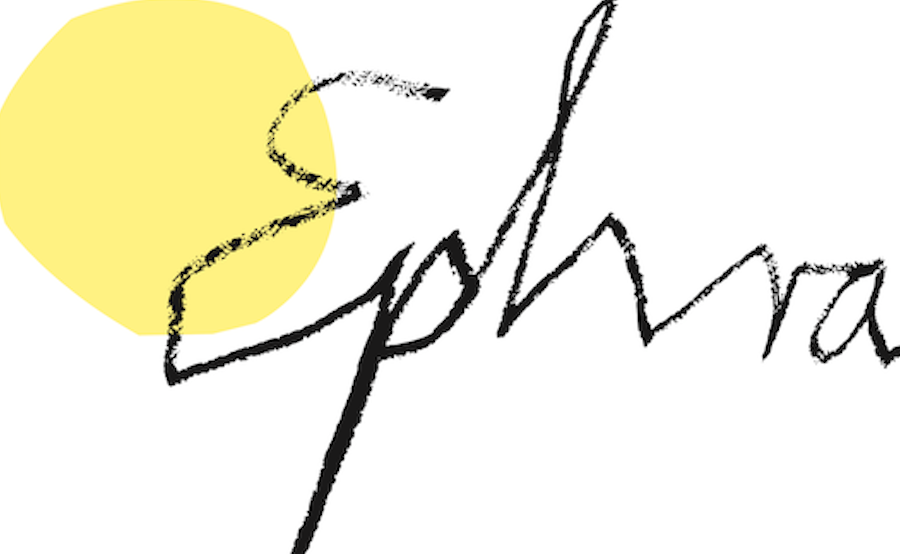Ulrich Vogl's “Cognition-Gain Catalysts”
Ulrich Vogl’s studio is located in a large old building in which many artists work – we can see this from the large wall in the stairwell, which is filled with different mailboxes. Ulrich welcomes us with a very broad and friendly smile. He invites us in and admits that he is a bit excited and spent an extra four hours cleaning up before we arrived. He was very thorough about it: in a small adjoining room, there are all kinds of materials in boxes that might someday become works of art. And on a gallery, countless boxes with red-and-white striped tape are piled up, in which finished works are waiting to be shown.
But he has also hung up some of his artworks, and they are inspected directly by us. For example, a wire basket juts out of the wall high above our heads, encased in a veil. It reminds us of a basketball hoop, except that the ball can’t fall through because the basket is closed at the bottom. Ulrich shows us what inspired him to make this work: a tiny Asian fondue strainer. He then recreated it in much larger size and hung it on the wall at basketball hoop height.
He enjoys seeing how objects transform and can suddenly mean something completely different or many different things when you change their size, for example. He then calls the objects “cognitive catalysts.” (Catalysts are machines or substances that trigger or accelerate a certain process). Ulrich wants his art to set in motion – through surprise or wonder – a cognition through which we perceive our environment, or perhaps ourselves, a little differently. Of course, this requires good ideas, and Ulrich reveals to us that sometimes, when he thinks he has a particularly good idea, he gets so excited that he has to go to the bathroom three times. But he also doesn’t like some works so much after a while, because he can only recognize one very specific thing in them instead of many different ones, and he finds that rather boring.
Ulrich particularly enjoys making art out of moments or memories. For example, while camping, he once observed how the sun cast dancing shadows from branches onto the tent wall. He found this spectacle so fascinating that he always wanted to have it with him and directly recreated it: With the help of a construction made of a mirror, some tape, branches, light and a fan, he can now cast the shadows on any wall that surrounds him.
He then also builds a shadow play together with us and a fantasy landscape is created in which we place a wide variety of shapes: Plants, dinos and astronauts – or are they rather monsters? In the end, the light is switched on in the otherwise dark room and the shadow of the landscape fills the large studio wall. Ulrich is grinning at least as broadly as when we arrived, and even if he didn’t go to the bathroom once during our visit, we’re convinced that he won’t get bored with our artwork anytime soon.




